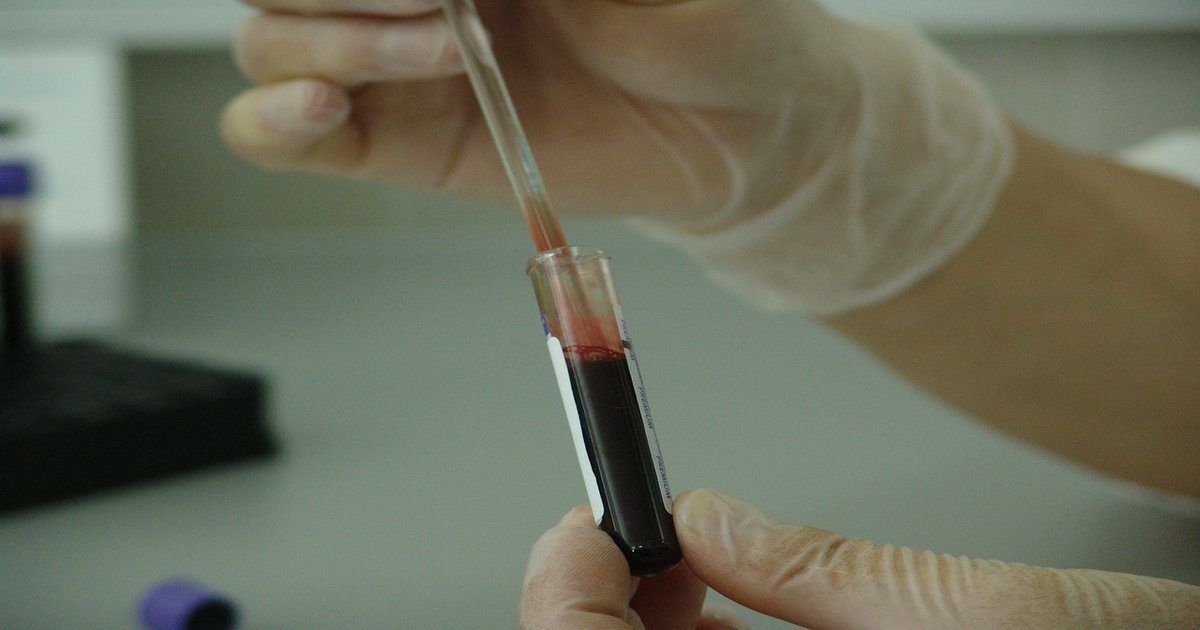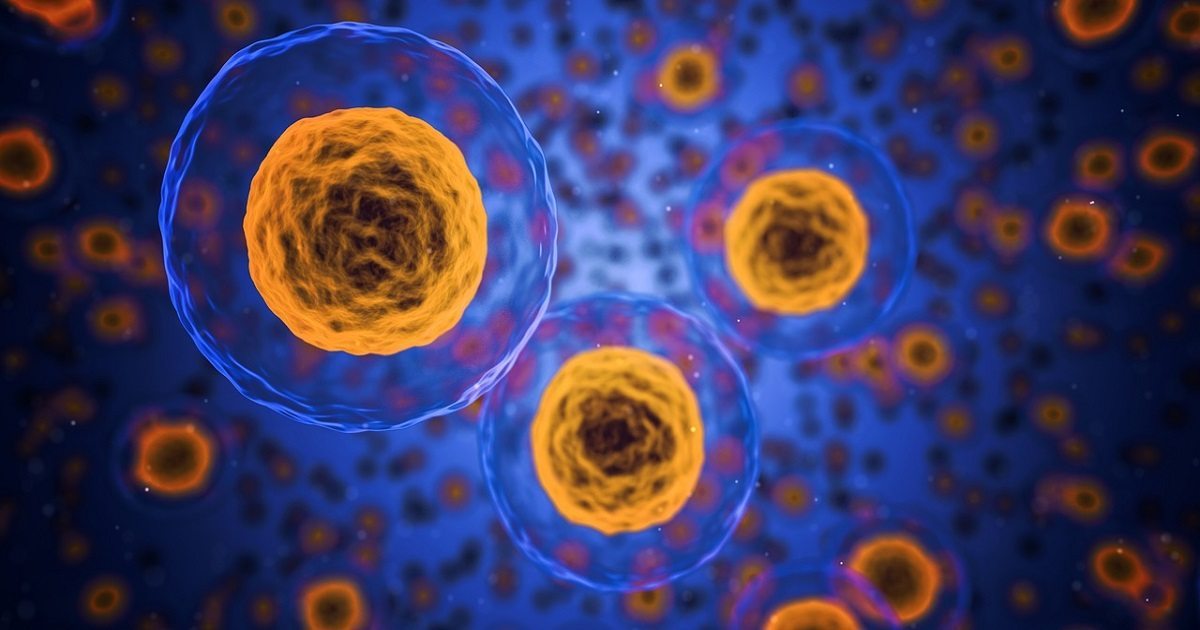Category: Featured News

Biomarker May Be Useful Prognostic Factor for Mesothelioma
Nearly 3,000 Americans a year hear the words, “You have mesothelioma.” While the available treatments can relieve symptoms, they do little to improve survival. Stage of the disease, lifestyle, gender and age all play into a patient’s survival. Now, researchers believe that the fibulin-3 biomarker may be another indicator for survival in mesothelioma patients.
Researchers from the Asbestos Diseases Research Institute of Australia, report that while fibulin-3, a protein that floats in blood plasma and in some bodily fluid, has previously been identified as a potential diagnostic marker for mesothelioma, it is also reliable as a prognostic marker. Such biomarkers as the fibulin-3 protein are being sought as a means to detect pleural mesothelioma at an earlier stage, to assist in prognosis, and to individualize treatment strategies for mesothelioma patients.
In a recent study, the researchers measured the amount of fibulin-3 in plasma and pleural effusion from malignant pleural mesothelioma patients and in tumor-bearing mice. They found that fibulin-3 was over-expressed in all mesothelioma lines and that there was a correlation between the expressed and secreted levels. They discovered that the fibulin-3 levels in “pleural effusion fluid were found to be independently associated with prognosis.”
In a 2012 study, using a simple blood test and a lung fluid test of pleural effusion, researchers from NYU Langone Medical Center, led by Dr. Harvey Pass, Director, NYU Division of Thoracic Surgery and Chief of Thoracic Oncology, at NYU Langone, found that the protein fibulin-3 is four to five times more elevated in individuals with mesothelioma than those without. By measuring the levels of fibulin-3 the researchers were able to distinguish healthy people with exposure to asbestos from patients with mesothelioma establishing the protein as a potential mesothelioma diagnostic marker.
According to the NYU Langone website, the team is continuing to study the usefulness of fibulin-3 as a diagnostic marker through “a large validation study using an asbestos exposed cohort of individuals in Santiago Chile.” The study, funded by the NCI, was scheduled to begin in the third quarter of 2015.
Pleural mesothelioma, a rare form of cancer affecting the lining of the lungs, is highly aggressive and there is no cure for the disease. Any research unique to mesothelioma brings hope to the community that finding a new, effective treatment is on the horizon.
The results of the ADRI study were published in the Sept. 2015 British Journal of Cancer.

Imaging Tool May Guide Surgeons to Successful Removal of Mesothelioma Cells
Duke University and Massachusetts General Hospital oncologists are helping to bring a breakthrough cancer-fighting tool to surgeons. The two centers have partnered with Lumicell, Inc., in clinical trials to test the safety of an investigative tool that could help surgeons achieve total cancer resection in one attempt. For mesothelioma patients who have a very high chance of recurrence, this tool could be a life saver.
Developed by Lumicell, Inc., LUM015 combines a hand-held imaging device with an injectable agent that glows, or fluoresces, when cancer cells are detected. This gives surgeons instant feedback and guides them to remove all traces of the cancerous tumor.
According to Lumicell, the company “is addressing the number one challenge in cancer surgery – the need to remove all cancer cells within the tumor bed during the first surgery,” with its LUM015 technology.
“The unprecedented ability to see and remove all cancer cells during the initial surgery has the potential to significantly improve surgical outcomes and reduce healthcare costs by eliminating the need for repeat surgeries,” reports Lumicell.
Mesothelioma, an unusual form of cancer caused by exposure to airborne asbestos fibers, often has a complex growth pattern making complete surgical removal a very difficult task. Surgeons often have to guess how much tissue to remove, then send samples to the lab for confirmation that they got it all. If cancer cells are found in the margin of the tumor, that often means recurrence is inevitable and another surgery may be required.
LUM015 is unique in that it offers real-time visuals to the surgeons to ensure clean tissue margins, indicating all cancerous cells have been removed. This helps eliminate repeat surgeries to remove any missed cancer cells and, as a result, it can halt cancer recurrence and metastasis.
“In the operating room our goal is to take out 100 percent of a patient’s tumor, and the way we try to do that is to take out a margin of normal tissue around the tumor,” said Brian Brigman, M.D., Ph.D., chief of orthopedic oncology at Duke, in a Feb. 2 interview with ABC11 News in Raleigh, NC. “There are parts of the tumor that are microscopic that we couldn’t see even if we wanted to. What the probe does is allow us to see microscopic disease that was maybe left behind.”
Although Dr. Brigman is enthusiastic about the potential use for the tool, saying, “This is groundbreaking research in the way we treat sarcomas,” he admits it could still be 10 years before the tool is used on a regular basis with patients.
To the nearly 3,000 Americans who are diagnosed with mesothelioma each year, and who typically face a grim prognosis, this tool could extend their survival and improve their quality of life.
LUM015 is currently being tested on breast cancer patients. For more information on the clinical trial see ClinicalTrials.gov.
Know more about Mesothelioma and how you can deal with it.

Researchers Find Way to Disrupt Cancer Stem Cell Growth That May Limit Mesothelioma Metastasis
The difficulty in successfully eradicating mesothelioma, an asbestos-caused cancer, is that even after many cycles of chemotherapy, the primary treatment protocol, many of the elusive cancer cells continue to thrive or regenerate. Now, researchers report that in order to successfully eliminate cancer they must first focus on eliminating cancer stem cells – and they know how to do just that.
A team of researchers from the Max Delbrück Center for Molecular Medicine (MDC) in Berlin, led by Liang Fang, report they have found a molecule that interrupts the stem cell survival mechanism, effectively killing off the cancer. The researchers report these errant stem cells are “Wnt-addicted cancer stem cells,” named for the Wnt signaling pathway on which they flourish. When functioning properly, the molecular network maintains the integrity of cells, according to the researchers, but when switched on inappropriately, it can lead to uncontrolled cancer growth and metastases.
According to various studies, metastasis is the cause of nearly 90 percent of cancer deaths. Even though cancer stem cells make up just one percent of cancer cells, according to one study, it is these cells that survive the effects of anti-cancer drugs leaving mesothelioma patients with a seemingly indestructible cancer.
Various researchers have reported that Wnt signaling is activated in mesothelioma cells. In one 2013 study reporting on the effect of the Wnt signaling pathway in mesothelioma, researchers concluded: “Modulation of Wnt signaling in MM [malignant mesothelioma] may prove a means of targeting proliferation and drug resistance in this cancer.”
In the recent study, the German researchers report they found a molecule that interrupts the “biochemical signals essential for the survival of a certain type of cancer stem cell.” They found that beta-catenin, one component in the Wnt pathway, and the TCF4 protein bind together and activate genes that then provide the stimulation cancer stem cells need to thrive. They then turned their research to finding a way to interrupt the connection between the two proteins.
Through trial and error testing by introducing different compounds one at a time, the researchers settled on the LF3 compound that “strongly inhibited binding” and was the “most potent inhibitor.”
When the compound was tested on tumor cells, they found “LF3 blocked several crucial features: it interrupted the cell cycle, preventing them from replicating, and strongly reduced their ability to migrate. LF3 didn’t seem to affect healthy cells at all.”
“We observed a strong reduction of tumor growth,” says Walter Birchmeier, leader of the Screening Unit and Medicinal Chemistry Group, of the results on a mouse model. “What remained of the tumors seemed to be devoid of cancer stem cells – LF3 seemed to be powerfully triggering these cells to differentiate into benign tissue. At the same time, no signaling systems other than Wnt were disturbed. All of these factors make LF3 very promising to further develop as a lead compound, aiming for therapies that target human tumors whose growth and survival depend on Wnt signaling.”
Physicians, oncologists and mesothelioma patients are anxious to find a new treatment for the incurable disease, and focusing on the Wnt pathway may be the breakthrough needed for increasing survival in mesothelioma patients.
The study was published Dec. 8 online in Cancer Research.

Will President Obama’s “Moonshot” Bring an End to Mesothelioma?
Time and again, politicians, researchers and medical professionals have taken on cancer, pledging to eradicate the disease. Now, President Obama has joined the fray introducing the “moonshot” program saying, “let’s make America the country that cures cancer once and for all.” Could this be the start of the end to mesothelioma and other cancers?
During President Obama’s Jan. 12 State of the Union address he announced a national effort to “cure cancer.” Obama has allocated the money and put Vice President Joe Biden at the helm. The two of them believe this “moonshot” will bring about the breakthroughs needed to bring an end to the needless suffering of millions of Americans – and ultimately, people worldwide. The number of cancer cases in the U.S. is expected to rise to 22 million in the next 20 years.
“For the loved ones we’ve all lost, for the families that we can still save, let’s make America the country that cures cancer once and for all,” said Obama.
Last month, according to Obama, Biden worked with Congress to allocate an extra $2 billion for scientists at the National Institutes of Health, “the strongest resources that they’ve had in over a decade.” In addition, Biden and his team have met with hundreds of the world’s top cancer physicians, researchers, and philanthropists, including those at the University of Pennsylvania Abramson Cancer Center where Biden held the formal launch for the program.
“And the goal of this initiative — this “Moonshot” — is to seize this moment,” said Vice President Joe Biden in a Jan. 12 press release, on his blog on Medium, announcing the initiative. “To accelerate our efforts to progress towards a cure, and to unleash new discoveries and breakthroughs for other deadly diseases.”
“My commitment is not for the next 12 months,” Biden told the attendees at Abramson on Jan 15. “I’ve been stunned by the overwhelming response of welcoming me, to ask me to be the facilitator and convener….I plan on doing this the rest of my life.”
Biden selected Penn Medicine for “the cutting edge immunotherapy work done there.” The Mesothelioma Applied Research Foundation applauded the partnership due to Penn’s work with mesothelioma.
“We’ve had a long-standing partnership with Penn Medicine involving the work they’ve done in the field of mesothelioma,” the Mesothelioma Applied Research Foundation said on its Facebook page on Jan. 21. “We’re happy to see the cancer center at the forefront of the new initiative to find a cure with the spotlight on its work in immunotherapy.”
Penn Medicine is the home of Penn’s Mesothelioma and Pleural Program which, according to the website, “brings together internationally renowned experts in medical, surgical and radiation oncology and pulmonology who collaborate in the diagnosis, treatment and research of mesothelioma and pleural disease.”
Mesothelioma is diagnosed in approximately 3,000 people in the United States each year. The disease is incurable, though there are treatments that can improve the patients’ survival. Immunotherapy has recently taken the spotlight for treatment, with Keytruda and Opdivo, both anti-cancer drugs that boost the immune system, showing promise in the treatment of mesothelioma.
Mesothelioma is a rare form of cancer typically affecting the lining of the lungs. Caused by exposure to airborne asbestos fibers, most cases of mesothelioma are diagnosed 30 years or more after exposure.
In 2011, Michele Carbone, M.D., Ph.D., former director of the University of Hawaii Cancer Center, reported that more than 20 million people in the United States are at risk of developing malignant mesothelioma due to asbestos exposure. This moonshot initiative is critical for helping halt the onslaught of this disease.
“I know that we can help solidify a genuine global commitment to end cancer as we know it today — and inspire a new generation of scientists to pursue new discoveries and the bounds of human endeavor,” says Biden.
Sources :
- State of the Union
https://www.whitehouse.gov/the-press-office/2016/01/12/remarks-president-barack-obama-%E2%80%93-prepared-delivery-state-union-address - Penn’s Mesothelioma and Pleural Program
http://www.penncancer.org/patients/cancer-types/mesothelioma/ - Biden told the attendees at Abramson
http://news.pennmedicine.org/blog/2016/01/vice-president-biden-launches-moonshot-effort-at-abramson-cancer-center-photos.html - Vice President Joe Biden
https://medium.com/cancer-moonshot/inspiring-a-new-generation-to-defy-the-bounds-of-innovation-a-moonshot-to-cure-cancer-fbdf71d01c2e

“The Median Isn’t The Message,” by Stephen J. Gould
Dr. Stephen J. Gould was an internationally-renowned paleontologist and evolutionary biologist who lived a healthy and productive twenty years after he was diagnosed with peritoneal mesothelioma in 1982. When Dr. Gould died in 2002, he died from an entirely unrelated form of cancer. In 1985 he wrote the following essay about his diagnosis and experience with the disease.
It is a wonderful essay about his determination to not let simple statistics determine his response to mesothelioma. Many cancer patients, not just those diagnosed with mesothelioma, have been inspired by Dr. Gould’s life and words.
“The Median Isn’t The Message”
My life has recently intersected, in a most personal way, two of Mark Twain’s famous quips. One I shall defer to the end of this essay. The other (sometimes attributed to Disraeli), identifies three species of mendacity, each worse than the one before—lies, damned lies, and statistics.
Consider the standard example of stretching the truth with numbers – a case quite relevant to my story. Statistics recognizes different measures of an “average” or central tendency. The mean is our usual concept of an overall average – add up the items and divide them by the number of sharers (100 candy bars collected for five kids next Halloween will yield 20 for each in a just world). The median, a different measure of central tendency, is the half-way point. If I line up five kids by height, the median child is shorter than two and taller than the other two (who might have trouble getting their mean share of the candy). A politician in power might say with pride, “The mean income of our citizens is $15,000 per year.” The leader of the opposition might retort, “But half our citizens make less than $10,000 per year.” Both are right, but neither cites a statistic with impassive objectivity. The first invokes a mean, the second a median. (Means are higher than medians in such cases because one millionaire may outweigh hundreds of poor people in setting a mean; but he can balance only one mendicant in calculating a median).
The larger issue that creates a common distrust or contempt for statistics is more troubling. Many people make an unfortunate and invalid separation between heart and mind, or feeling and intellect. In some contemporary traditions, abetted by attitudes stereotypically centered on Southern California, feelings are exalted as more “real” and the only proper basis for action—if it feels good, do it—while intellect gets short shrift as a hang-up of outmoded elitism. Statistics, in this absurd dichotomy, often become the symbol of the enemy. As Hilaire Belloc wrote, “Statistics are the triumph of the quantitative method, and the quantitative method is the victory of sterility and death.”
This is a personal story of statistics, properly interpreted, as profoundly nurturant and life-giving. It declares holy war on the downgrading of intellect by telling a small story about the utility of dry, academic knowledge about science. Heart and head are focal points of one body, one personality.
In July 1982, I learned that I was suffering from abdominal mesothelioma, a rare and serious cancer usually associated with exposure to asbestos. When I revived after surgery, I asked my first question of my doctor and chemotherapist: “What is the best technical literature about mesothelioma?” She replied, with a touch of diplomacy (the only departure she has ever made from direct frankness), that the medical literature contained nothing really worth reading.
Of course, trying to keep an intellectual away from literature works about as well as recommending chastity to Homo sapiens, the sexiest primate of all. As soon as I could walk, I made a beeline for Harvard’s Countway medical library and punched mesothelioma into the computer’s bibliographic search program. An hour later, surrounded by the latest literature on abdominal mesothelioma, I realized with a gulp why my doctor had offered that humane advice. The literature couldn’t have been more brutally clear: mesothelioma is incurable, with a median mortality of only eight months after discovery. I sat stunned for about fifteen minutes, then smiled and said to myself: so that’s why they didn’t give me anything to read. Then my mind started to work again, thank goodness.
If a little learning could ever be a dangerous thing, I had encountered a classic example. Attitude clearly matters in fighting cancer. We don’t know why (from my old-style materialistic perspective, I suspect that mental states feed back upon the immune system). But match people with the same cancer for age, class, health, socioeconomic status, and, in general, those with positive attitudes, with a strong will and purpose for living, with commitment to struggle, with an active response to aiding their own treatment and not just a passive acceptance of anything doctors say, tend to live longer. A few months later I asked Sir Peter Medawar, my personal scientific guru and a Nobelist in immunology, what the best prescription for success against cancer might be. “A sanguine personality,” he replied. Fortunately (since one can’t reconstruct oneself at short notice and for a definite purpose), I am, if anything, even-tempered and confident in just this manner.
Hence the dilemma for humane doctors: since attitude matters so critically, should such a sombre conclusion be advertised, especially since few people have sufficient understanding of statistics to evaluate what the statements really mean? From years of experience with the small-scale evolution of Bahamian land snails treated quantitatively, I have developed this technical knowledge – and I am convinced that it played a major role in saving my life. Knowledge is indeed power, in Bacon’s proverb.
The problem may be briefly stated: What does “median mortality of eight months” signify in our vernacular? I suspect that most people, without training in statistics, would read such a statement as “I will probably be dead in eight months”—the very conclusion that must be avoided, since it isn’t so, and since attitude matters so much.
I was not, of course, overjoyed, but I didn’t read the statement in this vernacular way either. My technical training enjoined a different perspective on “eight months median mortality.” The point is a subtle one, but profound—for it embodies the distinctive way of thinking in my own field of evolutionary biology and natural history.
We still carry the historical baggage of a Platonic heritage that seeks sharp essences and definite boundaries. (Thus we hope to find an unambiguous “beginning of life” or “definition of death,” although nature often comes to us as irreducible continua.) This Platonic heritage, with its emphasis in clear distinctions and separated immutable entities, leads us to view statistical measures of central tendency wrongly, indeed opposite to the appropriate interpretation in our actual world of variation, shadings, and continua. In short, we view means and medians as the hard “realities,” and the variation that permits their calculation as a set of transient and imperfect measurements of this hidden essence. If the median is the reality and variation around the median just a device for its calculation, the “I will probably be dead in eight months”may pass as a reasonable interpretation.
But all evolutionary biologists know that variation itself is nature’s only irreducible essence. Variation is the hard reality, not a set of imperfect measures for a central tendency. Means and medians are the abstractions. Therefore, I looked at the mesothelioma statistics quite differently – and not only because I am an optimist who tends to see the doughnut instead of the hole, but primarily because I know that variation itself is the reality. I had to place myself amidst the variation.
When I learned about the eight-month median, my first intellectual reaction was: fine, half the people will live longer; now what are my chances of being in that half. I read for a furious and nervous hour and concluded, with relief: damned good. I possessed every one of the characteristics conferring a probability of longer life: I was young; my disease had been recognized in a relatively early stage; I would receive the nation’s best medical treatment; I had the world to live for; I knew how to read the data properly and not despair.
Another technical point then added even more solace. I immediately recognized that the distribution of variation about the eight-month median would almost surely be what statisticians call “right skewed.” (In a symmetrical distribution, the profile of variation to the left of the central tendency is a mirror image of variation to the right. In skewed distributions, variation to one side of the central tendency is more stretched out – left skewed if extended to the left, right skewed if stretched out to the right.) The distribution of variation had to be right skewed, I reasoned. After all, the left of the distribution contains an irrevocable lower boundary of zero (since mesothelioma can only be identified at death or before). Thus, there isn’t much room for the distribution’s lower (or left) half—it must be scrunched up between zero and eight months. But the upper (or right) half can extend out for years and years, even if nobody ultimately survives. The distribution must be right skewed, and I needed to know how long the extended tail ran – for I had already concluded that my favorable profile made me a good candidate for that part of the curve.
The distribution was indeed, strongly right skewed, with a long tail (however small) that extended for several years above the eight month median. I saw no reason why I shouldn’t be in that small tail, and I breathed a very long sigh of relief. My technical knowledge had helped. I had read the graph correctly. I had asked the right question and found the answers. I had obtained, in all probability, the most precious of all possible gifts in the circumstances – substantial time. I didn’t have to stop and immediately follow Isaiah’s injunction to Hezekiah—set thine house in order for thou shalt die, and not live. I would have time to think, to plan, and to fight.
One final point about statistical distributions. They apply only to a prescribed set of circumstances – in this case to survival with mesothelioma under conventional modes of treatment. If circumstances change, the distribution may alter. I was placed on an experimental protocol of treatment and, if fortune holds, will be in the first cohort of a new distribution with high median and a right tail extending to death by natural causes at advanced old age.
It has become, in my view, a bit too trendy to regard the acceptance of death as something tantamount to intrinsic dignity. Of course I agree with the preacher of Ecclesiastes that there is a time to love and a time to die—and when my skein runs out I hope to face the end calmly and in my own way. For most situations, however, I prefer the more martial view that death is the ultimate enemy—and I find nothing reproachable in those who rage mightily against the dying of the light.
The swords of battle are numerous, and none more effective than humor. My death was announced at a meeting of my colleagues in Scotland, and I almost experienced the delicious pleasure of reading my obituary penned by one of my best friends (the so-and-so got suspicious and checked; he too is a statistician, and didn’t expect to find me so far out on the right tail). Still, the incident provided my first good laugh after the diagnosis. Just think, I almost got to repeat Mark Twain’s most famous line of all: the reports of my death are greatly exaggerated.
Free Mesothelioma Patient & Treatment Guide
We’d like to offer you our in-depth guide, “A Patient’s Guide to Mesothelioma,” absolutely free of charge.
It contains a wealth of information and resources to help you better understand the condition, choose (and afford) appropriate treatment, and exercise your legal right to compensation.
Download Now